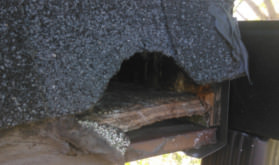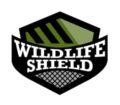
- Inspection
- Removal
- Humane
- Affordable
- Guaranteed
Although raccoons naturally live in forests happily eating plants, nuts, fruits, and bugs, they often wander into urban settings. Urban dwellings provide ample opportunity for raccoons to find shelter and stay fed and watered. Your attic is a particularly attractive location where raccoons often seek shelter. Unfortunately, they can damage your roof and attic, which can translate to unwanted expenses and you need to call raccoon removal Toronto as soon as you noticed raccoons entering your attic.
Damages to Your Attic
Raccoons are clever creatures. They use their five-fingered paws and sharp claws to pry shingles or tiles from roofing systems so they can gain access to your attic. What their claws cannot handle, their sharp teeth can take care of the rest. In an attempt to get into your attic, they can damage your roof significantly.
Openings in your roof created by raccoons leave your home susceptible to other issues. For instance, a damaged roof means your home is not susceptible to moisture buildup and other damages created by the elements. Once inside your attic, raccoons can create other expensive damages.
A raccoon may damage insulation with their claws or urine. They may use their claws to nest in the soft, fluffy insulation. They can also contaminate insulation with their urine and feces, which can pose health hazards to you and your family. You will need to remove the raccoon as soon as possible to avoid extensive damages.
Signs of a Raccoon in the Attic
We often receive calls about raccoons getting into the attic, particularly during the spring season. Pregnant raccoons do their best to find a safe place where they can give birth, and the best place in an urban setting is the attic of your home. Of course, how are you to know that you have a raccoon living in your attic?
Signs that indicate you have a raccoon in your attic include:
- Noise– Raccoons are big enough that they will make a lot of noise when they move around. Aside from hearing them shuffle around, you may also hear the strange noises they make when chattering, happy, or annoyed. They grunt, growl, “bark,” and cry. A young raccoon may make a noise that is often mistaken for the sound of birds.
- Feces– Spotting feces is a clear indication that you have a raccoon problem. Raccoon feces, also known as scat, may appear in your attic if you have a raccoon problem. If you find scat, do not attempt to clean it up. Scat cleaning and removal requires special equipment, such as the use of a respirator.
- Footprints– Walk around your yard and inspect the dirt. Look for raccoon tracks in the dirt. Look for a flat paw print with five tows. The size of the footprint may vary but is generally around 2 inches wide and 2 inches long. Hind prints may appear larger at 4 inches long. You might also inspect your attic for signs of footprints left on dusty surfaces.
- Damages – Another sign that you have a raccoon invading your attic would be damages to your property. Raccoons have oils on their fur that leave black smudges when they rub against walls. Also, look for enlarged holes around soffits and louvers that they use to enter the attic. You may also notice signs of damaged insulation.
If you happen to notice any signs of a raccoon invading your attic, call a professional for assistance. The sooner you have the animal removed, the better. The longer a raccoon dwells in your attic, the more likely it is that they will create expensive damages. Also, it is better to remove a raccoon before she delivers pups in your attic.
